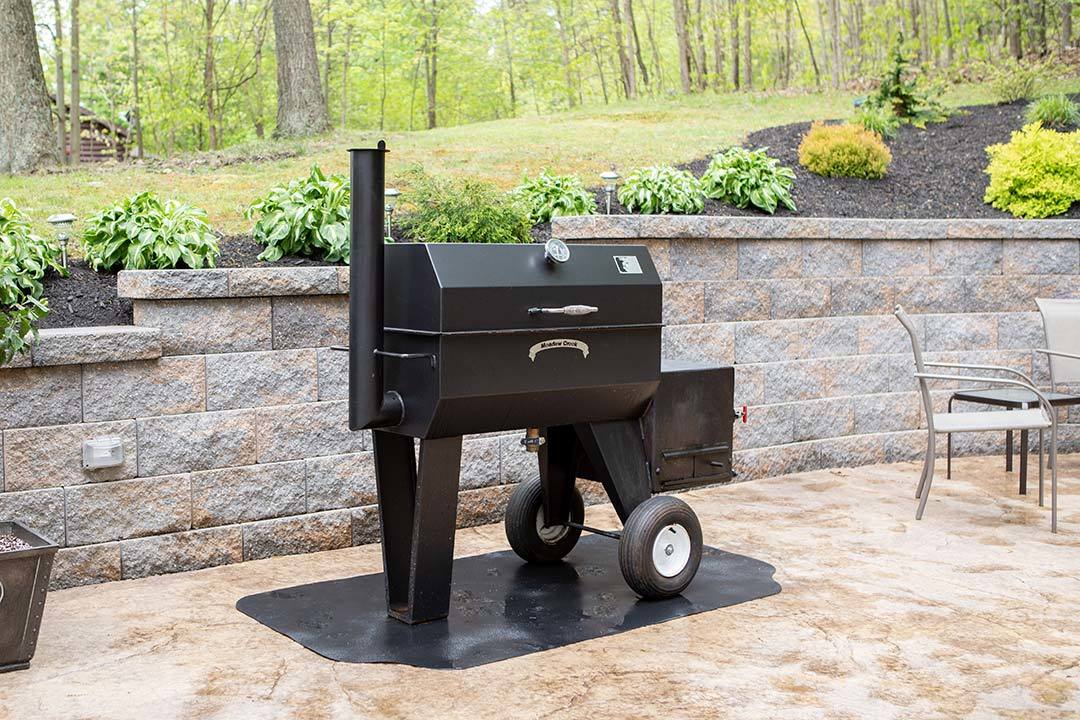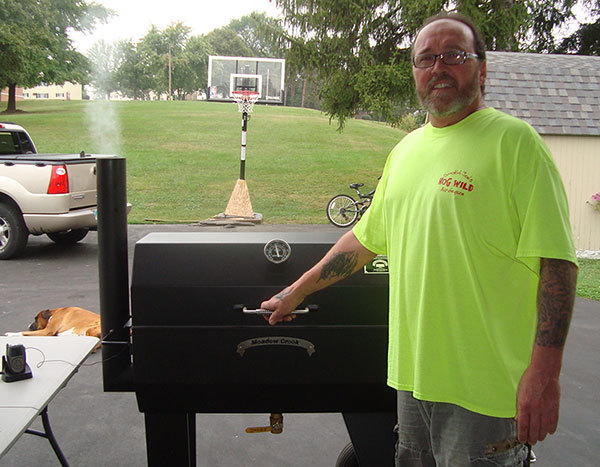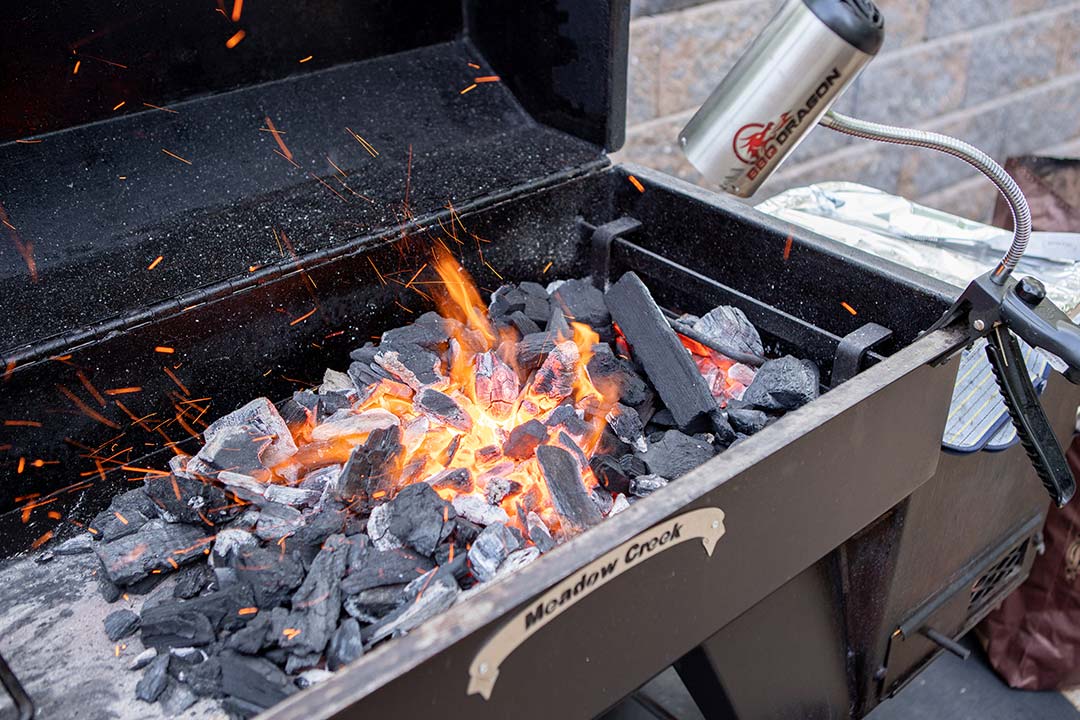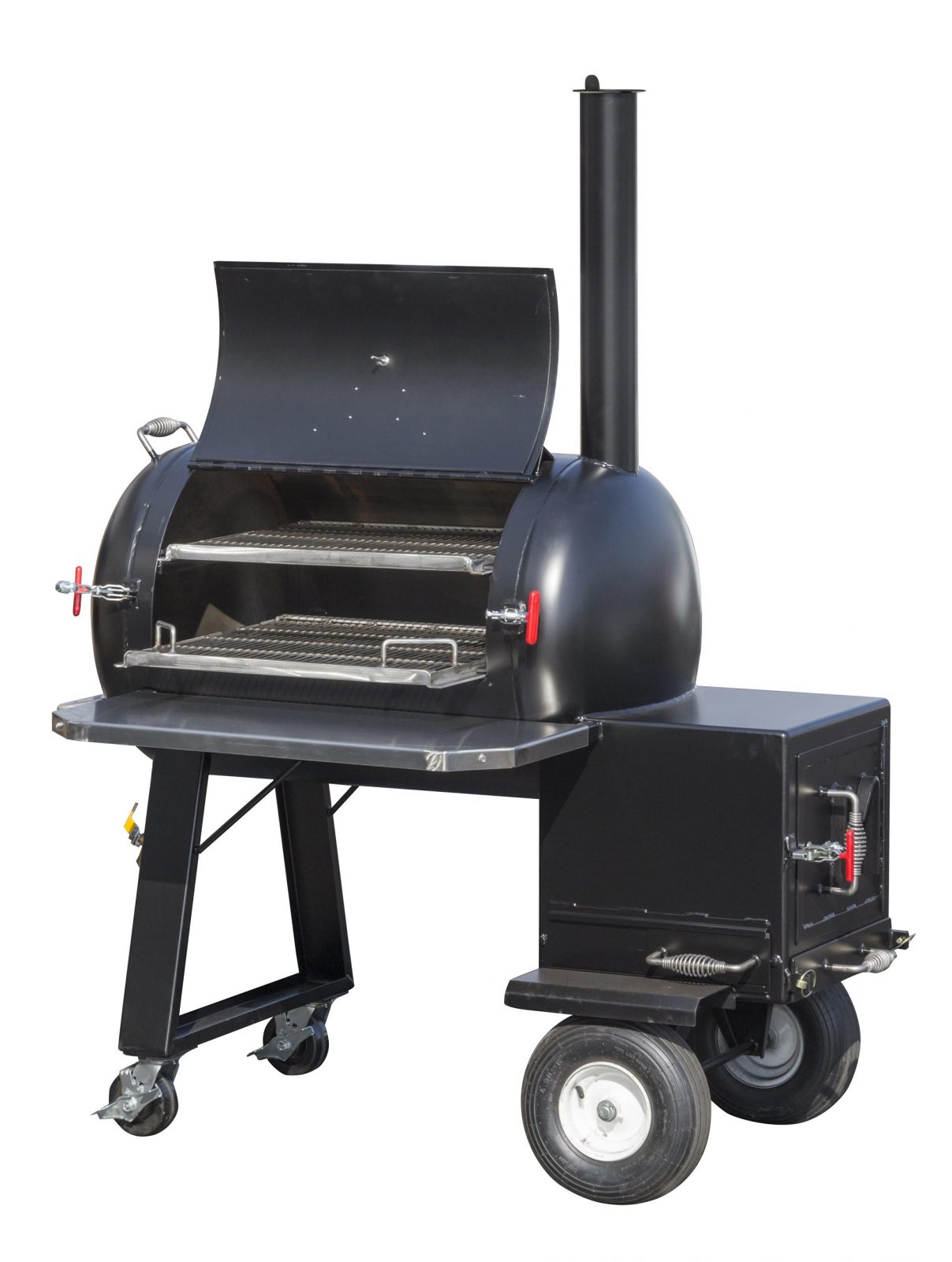November 13
A Beginner’s Guide to the SQ36 Offset Smoker
0 comments
The SQ36 offset smoker is an ideal choice for backyarders who appreciate handmade quality and the chance to master fire management and become a true "pitmaster."
I first started cooking on the SQ36 offset smoker 10 years ago and still consider it one of my favorite smokers. In this article, I will explain what sets the SQ36 smoker apart and share a few tips on using it.

The SQ36 is a handmade offset smoker for backyard enthusiasts who want better quality than what you can find among those that are mass-produced and sold in chain stores. The SQ36 is a best-selling Meadow Creek model.
It comes with a single cooking grate that holds 5–6 pork butts, 2 whole briskets, or 5–6 racks of baby rack ribs. If you need more space, add a second tier grate to almost double your cooking surface area.
Offset smokers have a firebox on the side and are fueled by charcoal and/or wood. Some pitmasters burn only wood, which they burn down to coals in a separate barrel and shovel into the firebox. The most common method is to build a bed of coals with charcoal and 1–3 log splits and then feed it with more wood every 45–60 minutes.
The SQ36 features an offset firebox and a distribution channel that runs nearly the entire length of the cooking chamber, helping to force more of the heat to the far end of the smoker.

“My experience barbecuing on the Meadow Creek SQ36 has been one of my greatest joys! I have FINALLY FOUND performance and quality in a smoker! I have tried many and none compare to my Meadow Creek SQ36! I know when I am barbecuing on it, that it is going to be something spectacular!”
—Ron in Ohio
We've got many more happy customers. Read some of their stories here:
Here is a collection of stories and recipes from the fun times I've had cooking on my SQ36 offset smoker.
Here is the basic process I follow for firing the SQ36 smoker:
Controlling the temperature in the smoker is all about fire management, which requires balancing the following factors:
To maintain a steady temperature in the SQ36 smoker, it's best to add a certain amount of fuel on a set interval or when the temperature drops by about 25 degrees in the smoker. You'll generally add more fuel every 45–60 minutes. You can either add a stick of wood or several pounds of charcoal.
Every smoker has a "hot spot" or area in the cooking chamber that's hotter than the rest, but the better ones are designed to minimize the effect. In an offset smoker, the hottest area is near the firebox.
The temperature in the SQ36 is fairly even and the entire main grate is usable (the meat next to the firebox won't burn up). The lower main grate does run a bit hotter than the optional second grate, so arrange the meat in the smoker accordingly. For example, if you're doing chicken or a pan of beans with some ribs, you could set the chicken and beans on the bottom and the ribs on the top grate.
The distance from the SQ36's heat source to the lower cooking grate is great enough that it's pretty easy to cook meat without burning the bottom sides, even a thin rack of ribs. I've actually struggled with this in other types of smokers from fine brands, including a Yoder pellet grill and the Big Green Egg, so I've concluded that the key to successfully run any smoker is to understand how the smoker works and then leverage it to your advantage.
The optional charcoal grilling pan hangs on the rails that support the main cooking grate and let you cook steaks and burgers with direct heat.

The body of the SQ36 smoker is made almost entirely of steel with a coating of high heat paint. The heat in the firebox is hard on the paint and regardless of how well you care for your smoker, the paint will burn off in places and rust will start developing unless you keep after it.
Here are a few tips to help you maintain the SQ36 smoker:
We sell our equipment through a network of dealers. Visit the SQ36 page in our online catalog for retail prices and specs. On the product page, click on "Customize" to see a list of available options or "Request a Quote" to send a quote request to your nearest dealer.
If you're shopping for a handmade offset smoker, you may also be interested in one of our reverse flow smokers. These smokers have some great features and options not available on the SQ36...
The TS70P pictured here is our smallest reverse flow smoker and offers 987 square inches of cooking surface.

Tags
guides, sq36 smoker